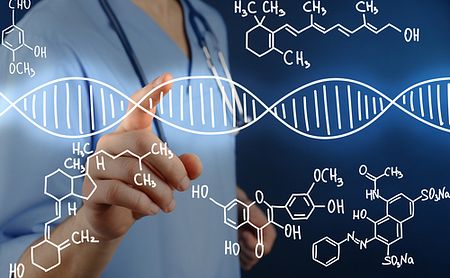PTC Preparing to Launch Gene Therapy, Pending Approval
Written by |

PTC Therapeutics is preparing to launch PTC-AADC, its experimental gene therapy for aromatic l-amino acid decarboxylase (AADC) deficiency, the company has announced in a press release.
Among other launch efforts, the company is expanding its genetic testing program, while finding and preparing expert pediatric neurosurgical centers.
AADC deficiency is a genetic disorder caused by mutations in the DDC gene, which codes for the AADC enzyme, required to produce two neurotransmitters — chemical messengers used by nerve cells to communicate with each other — called dopamine and serotonin.
Lower levels of these two neurotransmitters result in a variety of symptoms, including developmental delay, intellectual disability, and movement disorders.
PTC-AADC is designed to provide nerve cells with a working copy of the DDC gene, increasing production of AADC and potentially reverting patients’ symptoms.
A modified and harmless adeno-associated virus carries the therapeutic gene into cells, where it integrates into the genome to become a regular part of each patient’s complete set of genes. The permanent nature of this change makes PTC-AADC a one-time therapy.
To ensure that the treatment reaches the cells where it is needed, PTC-AADC is surgically injected into the putamen, a brain region responsible for producing most of the dopamine in the brain.
PTC-AADC is currently being reviewed by the European Medicines Agency for the treatment of AADC deficiency. A final recommendation from the agency’s Committee for Medicinal Products for Human Use, and the submission of a similar application to the U.S. Food and Drug Administration, are both expected by the first half of 2021.
Of note, the committee’s recommendations are usually followed by the European Commission, which makes the final decision.
The submissions are supported by data from three open-label clinical trials (NCT01395641, NCT02926066, and NCT02852213) testing PTC-AADC in children with AADC deficiency, ages 21 months to 8.5 years.
The treatment was found to reduce the frequency of oculogyric crises (involuntary upward eye movement characteristic of the disease), help the children gain weight, and improve their ability to sit, walk, and talk — milestones often delayed or unachieved in this patient population — in the first year post-treatment.
Uncontrolled movements known as dyskinesia proved the most common adverse side effect among participants. Most events were mild or moderate in severity, and stopped occurring within 10 months after receiving the treatment.
Long-term follow-up results from two of these trials also showed that children sustained their motor, cognitive, and language improvements over a five-year period.




